Paul Murrell tests the 2020 Ford Escape ST-Line with pricing, specs, ride and handling, safety, verdict and everything the over-50 driver needs to know.
Summary: Over the years, Ford’s Escape has had its ups and downs, It’s fair to say the latest is definitely an “up”. Good looking. Plenty of models. Spirited performance. About the only downside we can see is a price that’s slightly higher than the competition.
2020 Ford Escape ST-Line
Pricing: $40,990 (ST-Line AWD). Escape FWD from $35,990 up to Escape Vignale AWD $49,590 (Escape ST-Line FWD PHEV: $52,940). All plus on road costs. Prestige paint: $650. Prices come closer to competition as the spec level rises
Warranty: Five-years, unlimited km
Safety: 5-star ANCAP (tested 2020)
Engine: 2.0-litre GTDI Ecoboost petrol four-cylinder
Power: 183kW at 5700rpm
Torque: 387Nm at 3100 Power and torque are considerably better than the competitors’
Transmission: eight-speed automatic The PHEV will get a CVT
Drive: front wheels, intelligent all-wheel drive
Body: 4620mm (long); 1883mm (wide, exc mirrors); 1742mm (high, inc roof rails)
Ground clearance: 178mm (unladen)
Maximum loading height: 885mm
Width between wheelarches: 1051mm
Cargo area: 556 litres (five seat mode), 1478 litres (rear seats folded, loaded to roof)
Weight: 1690kg
Towing capacity: 1800kg
Wheels: 18-inch alloy
Tyres: 225/60 R18
Spare wheel: 17-inch emergency Something to consider if you’re going into the boonies
Turning circle: 11.1m
Fuel tank: 57 litres
Thirst: 8.6L/100km (combined, 91 RON unleaded)
seniordriver consumption: 8.4L/100km over 295km
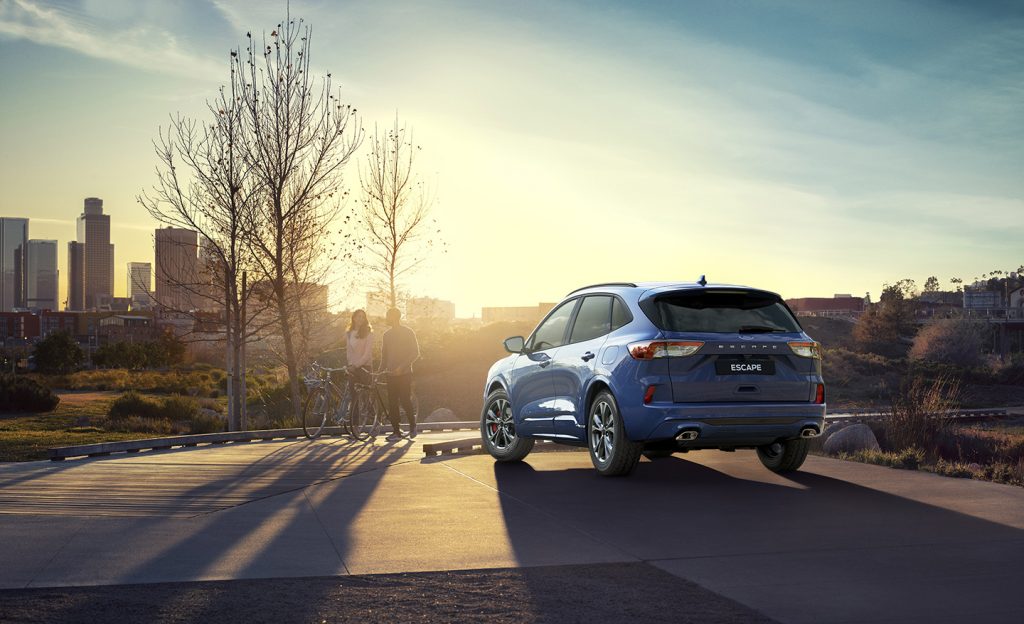
[review]
IF WE’RE BEING HONEST (and we always are!), we approached Ford’s new Escape with only limited enthusiasm.
However, it quickly won us over and we came away very impressed.
As with all new models, the Escape is facing tough competition in its category, with both the Mazda CX-5 (recently upgraded) and Toyota’s RAV4 being well established.
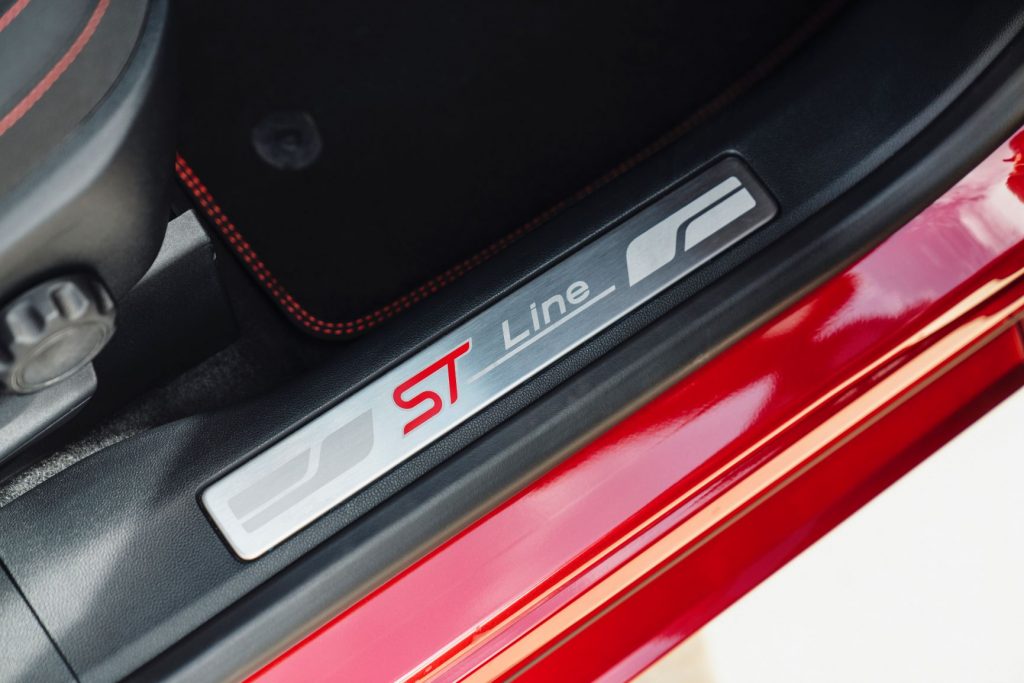
Three basic models become a lot more
Thankfully, the Escape comes with the choice of a single engine, the 2-litre Ecoboost four-cylinder petrol engine. It’s a beauty. Turbo lag is all but non-existent and pick up and mid-range punch far outpace the other offerings in the category.
The plug-in hybrid electric model will arrive sometime later this year, but the Ecoboost’s 183kW of power and substantial 387Nm of torque are more than fit for purpose.
On the highway, there’s never that feeling of “will it or won’t it?” because the Escape easily despatches slower traffic. The eight-speed automatic also trumps the CVTs used in some other SUVs.
We’ve read some criticism of the steering for being too direct. It certainly is quick, but the benefits far outweigh the disadvantages. You quickly adjust to the need for quite minimal inputs, especially after one or two over-enthusiast inputs cause a more sudden change in direction than you may be expecting. After that, it’s all as natural as breathing.
We were driving the ST-Line all-wheel drive, the model we strongly suggest is the pick of the bunch. The full range includes the entry grade (as is increasingly common, confusingly called “Escape”). You can get into that model from $35,990 and since it is quite well equipped, it’s good value. Next up the range is the ST-Line from $37,990 and the Vignale tops the range from $46,590. But that’s just the starting point. The Escape (entry) comes with 2WD only, while both the ST-Line and Vignale can be had with 4WD for an additional $3000. The PHEV will be offered in ST-Line spec, 2WD only, from $52,940 (all prices plus on road costs).
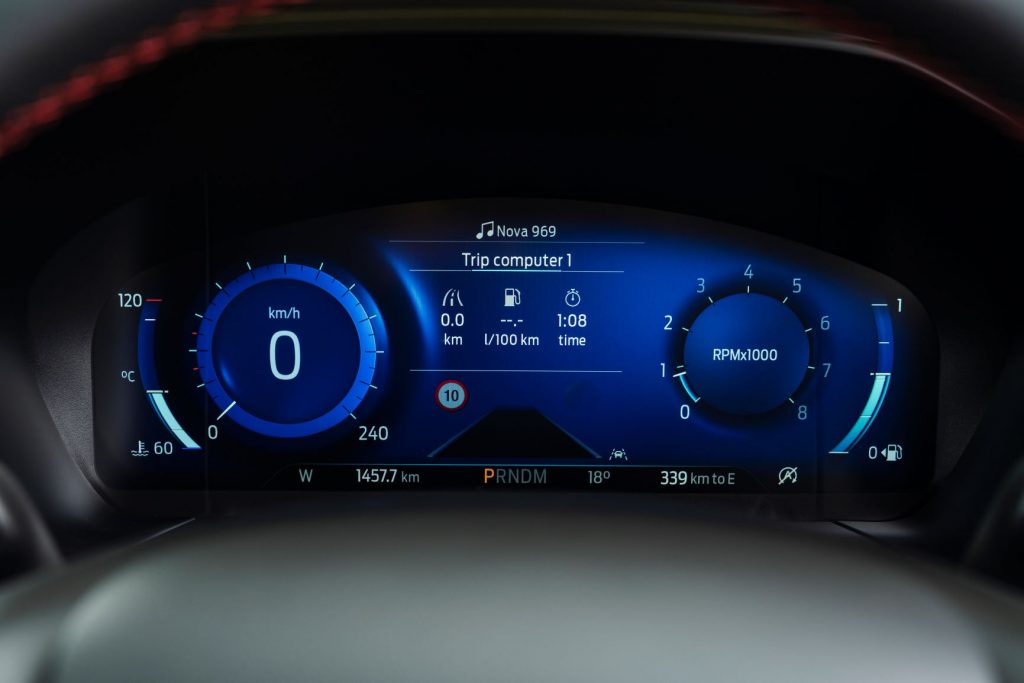
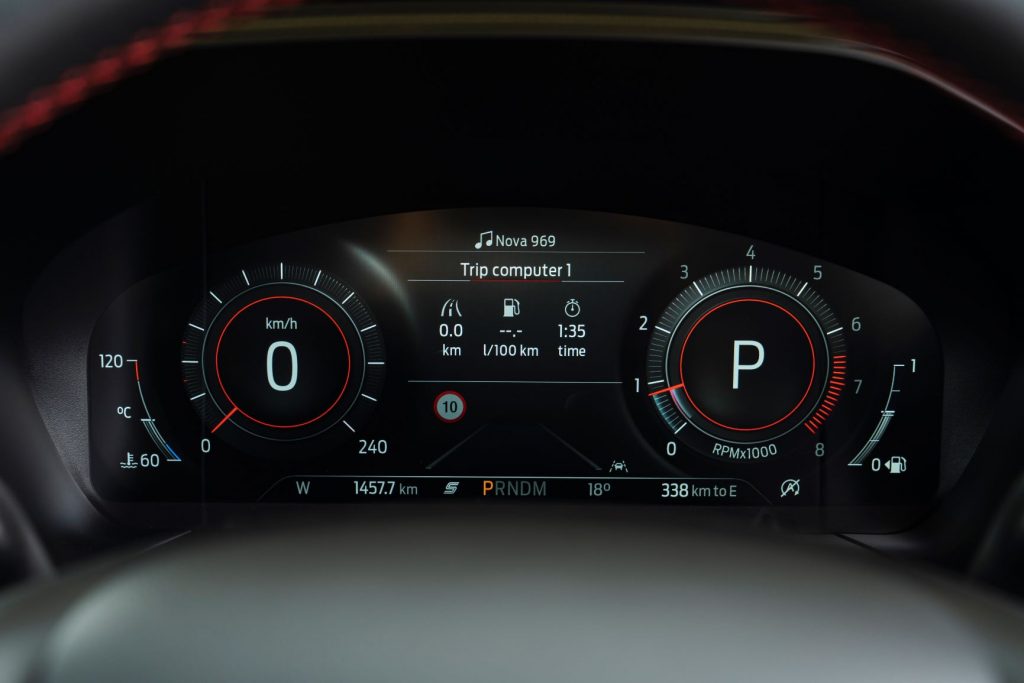
Not as over-priced as first appears
At first glance, the Escape appears a little over-priced, at around $2000 to $5000 more than entry models from other brands, but that’s slightly misleading.
Its equipment levels really put it on a par with the mid-range models such as the Toyota RAV4 GXL and the Mazda CX-5 Maxx (although it is always difficult to precisely compare price and equipment). As you move up the model range, the Escape ST-Line and Vignale come more into line with top-end models from the other makers. The wild card in all this is the Escape’s advantage in power and torque.
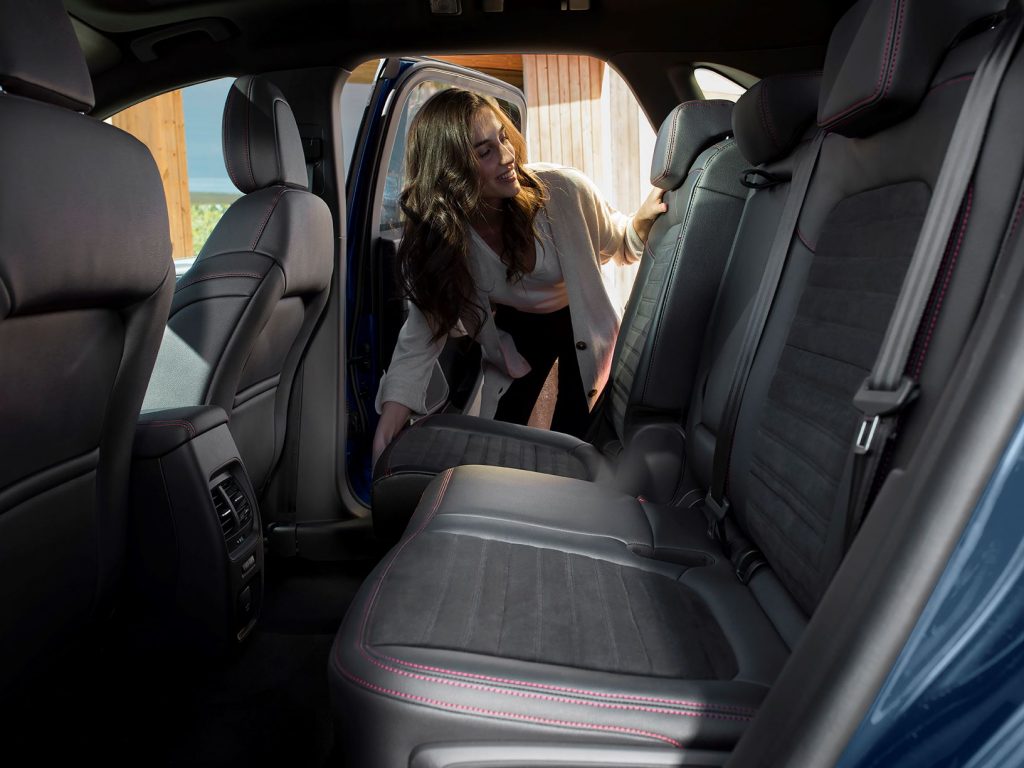
Equipped well
The base model comes with 18-inch alloy wheels, privacy glass, roof rails, eight-inch display with Apple CarPlay and Android Auto, wireless phone charger (which still doesn’t work with our Samsung), standard sat nav, dual-zone climate control, push-button start, smart key (auto unlock if you touch a door handle), six-speaker sound system with digital radio and a reversing camera.
The extra $2000 for the ST-Line gives the Escape a more sporting feel and distinctive appearance, with a good-looking black grille, 18-inch alloys of a different design (and fitted with excellent Continental tyres), sports suspension, roof rails in black rather than silver, large rear spoiler and dual exhaust tips. Inside, the feel is improved with sports seats enhanced with red stitching, flat-bottomed steering wheel, fully digital instrument cluster and metal-faced pedals. Black wheels and black detailing make the ST-Line look lower. All in all, a lot of kit for a small price.
The Vignale adds heated front and rear leather seats (which alone might skew the decision for some people), matric LED headlights, Bang & Olufsen sound system, head-up display, powered driver’s seat, auto parking and the silly “wave your foot to open” rear tailgate.
The eight-inch display fitted to all models looks a little small compared to those fitted to other makes, but the 12.3-inch digital instrument cluster in the ST-Line and Vignale is very impressive.
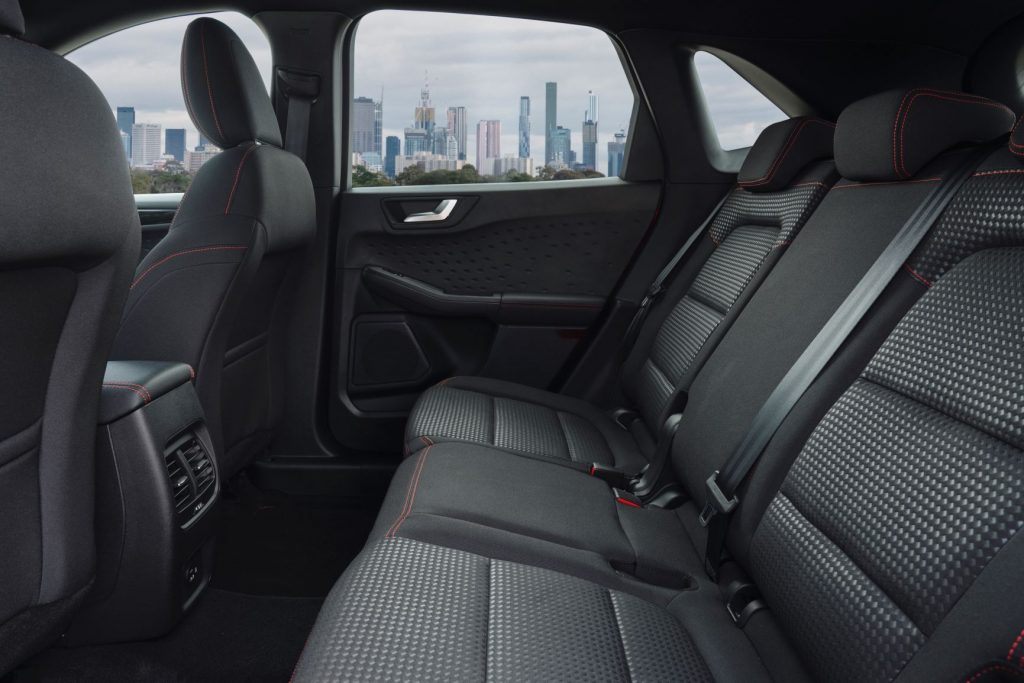
Size is still important
The squarish design of the Escape endows it with ample and usable interior space. Both design and storage are a step up on Fords of the past, although some may baulk at the practical-but-not-very-stylish fabric and basic-looking door trims. The circular gear selector on the centre console is a bit of a gimmick, but quickly becomes second nature to use.
The sports seats are comfortable without being commendable. You tend to sit high in the car, even with the seat at its lowest setting.
The second row also benefits from the square design, providing rear seat passengers with good headroom. A high hip point and wide-opening rear doors make getting in and out relatively easy (especially for less agile oldies) or installing and removing child seats. A clever touch is that the rear seats can be moved forward … it doesn’t do rear seat room any favours, but can be useful if you’re carrying walkers, bikes or other bulky items. If you will be, you’ll appreciate the low loading lip and the generous width between the wheel arches as well. Rear luggage is 412 litres, which rises to 556 litres if you take advantage of the sliding rear seats. Lowering the rear seats altogether (using a remote release) increases luggage capacity to 1478 litres (although Ford quotes this figure as “loaded to the roof”, which is hardly recommended).
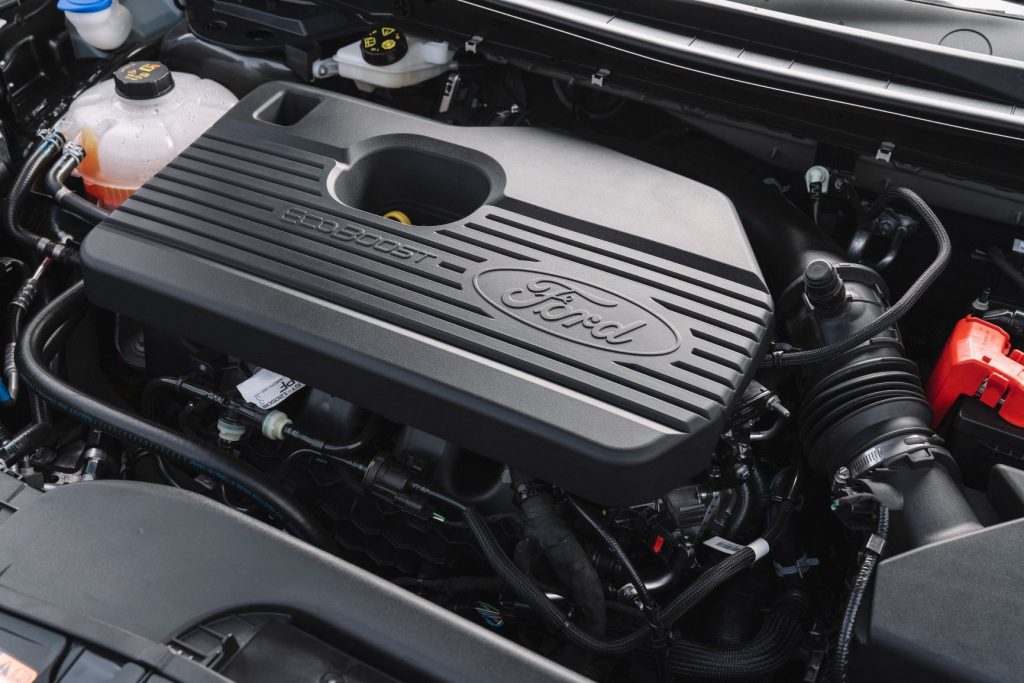
Honest fuel reporting
Many seniordriveraus readers complain that they can’t get close to the official fuel consumption figures in the cars they drive. As we’ve explained before, these figures are more for comparison than to suggest a fuel consumption figure you can reasonably expect in day-to-day driving.
The Escape is an exception.
The official combined consumption figure is quoted at 8.6L/100km. We were only able to test the Escape ST-Line AWD over four days and 295km, but we achieved a consumption figure of 8.4L/100km over a variety of driving conditions. Naturally, the figure you achieve will depend on many factors, including how enthusiastic you get with the throttle.
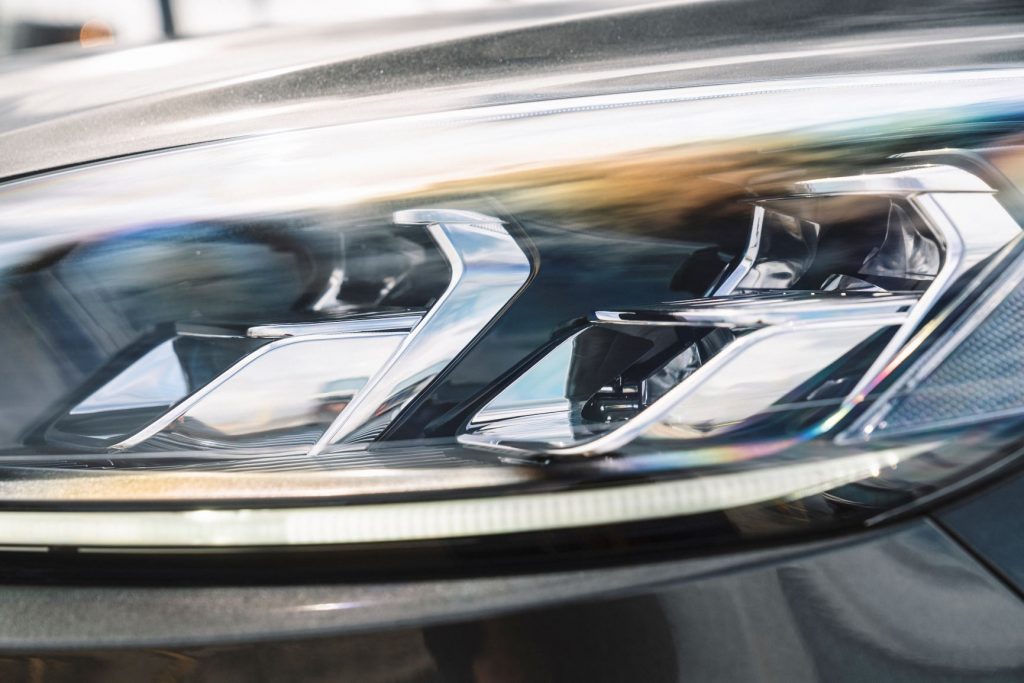
Some odd choices
Ford has made some of its offers a little confusing. For instance, you can specify your ST-Line with an “ST-Line Pack”. For an additional $2800, the ST-Line Pack adds a hands-free power liftgate (standard on the Vignale), heated front seats and the Technology Pack. The Technology Pack on its own for $1000, can be had on the base Escape, but standard on the Vignale. It upgrades the headlights to active LED matrix and includes a head-up display. The Park Pack ($1500) is not available on the base model, the Vignale or the ST-Line other than the PHEV. Optional 20-inch alloy wheels are a $500 option on the Vignale only. And premium paint is $650 on all variants.
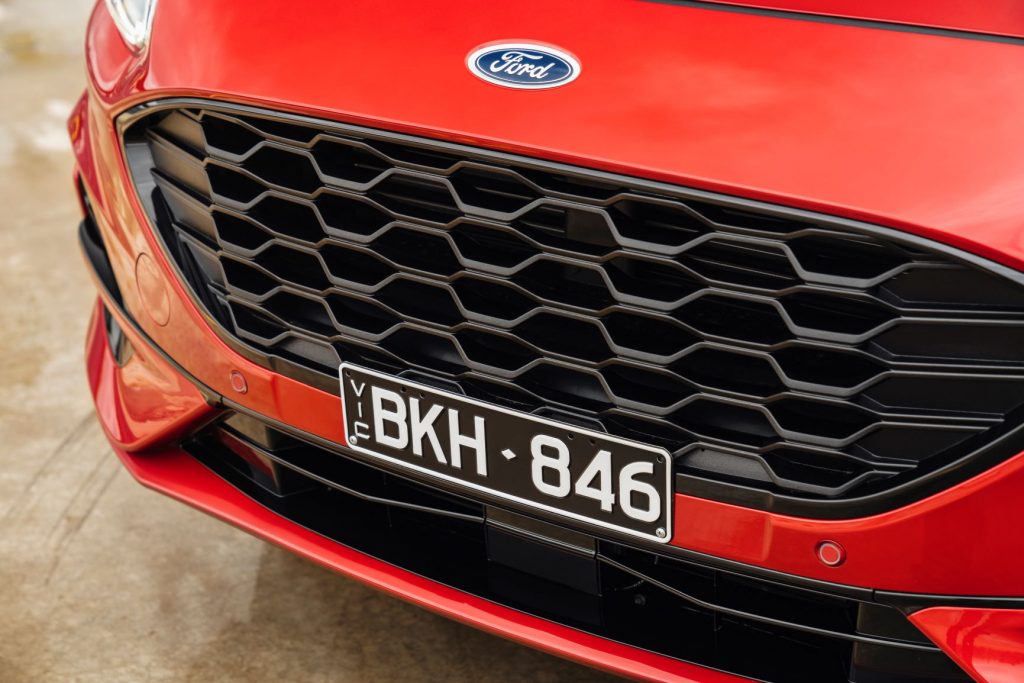
… and some tempting bonuses
Ford is offering the Escape with its FordPass Connect embedded modem with FordPass app compatibility for convenient remote vehicle functionality and connected serves. Buyers also enjoy the benefits of the Ford Service Benefits program, which supplies them with a loan car while their own is being serviced, complimentary auto club membership, including roadside assistance and sat nav map updates. Service intervals are also long at 15,000km/12 months. A and B logbook services for the first four years or 60,000km are set at a maximum of $299 per service. Warranty is five years/unlimited km.
Summary
We came to like the Escape and respect its ability. It should have what it takes to tackle Mazda, Toyota and Volkswagen’s Tiguan. However, the Koreans won’t be resting on their laurels and updates to the Kia Sportage and Hyundai Tucson will provide stiff competition.
